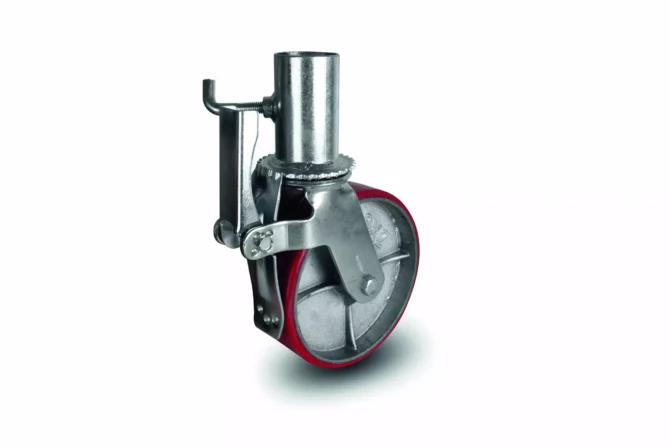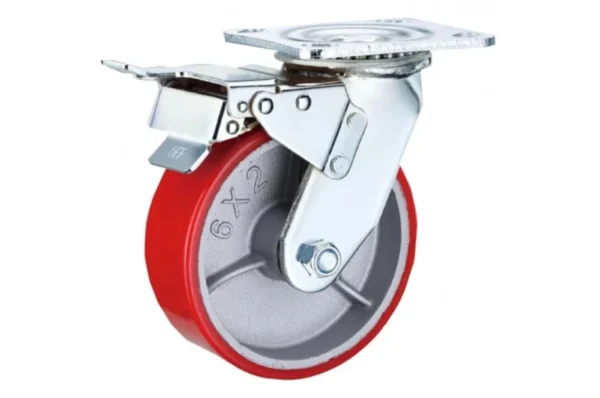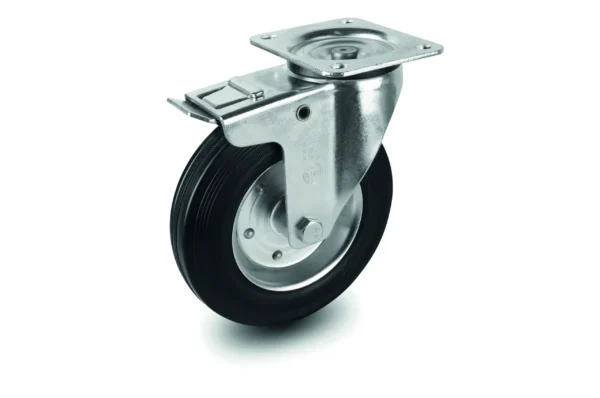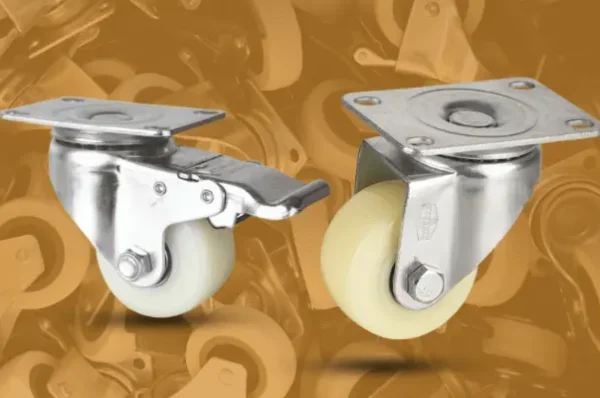When it comes to moving heavy equipment or supporting industrial loads, not all wheels are created equal. If you’re in logistics, manufacturing, or even event setup, choosing the right wheel system can impact everything from safety to operational efficiency. At Go Casters, we often get asked about the difference between heavy duty trolley wheels and standard casters. While both serve a similar purpose—mobility—their construction, materials, and use cases vary significantly.
What Makes a Wheel “Heavy Duty”?
Unlike standard casters, heavy duty trolley wheels are engineered to support substantial weight and resist the wear that comes from industrial use. They’re often made from high-strength materials such as forged steel or cast iron and paired with high-capacity bearings. The wheel diameter, tread design, and frame also tend to be larger and more robust.
Standard casters, on the other hand, are commonly used in office chairs, light carts, or retail displays. These are built for mobility over smooth surfaces and are generally not designed to bear extreme loads or endure rugged terrain.
Load Capacity and Performance
The core advantage of heavy duty trolley wheels lies in their load capacity. Where standard casters might max out at a few hundred pounds, heavy-duty options are capable of handling thousands. This makes them ideal for warehouses, industrial machines, and transport systems.
In addition to load-bearing strength, they also offer superior durability under continuous use. Friction, heat, and impact that would break down lighter wheels are easily absorbed by heavy-duty models.
Where Standard Casters Excel
That said, standard casters do have their place. If you’re operating in a low-load, high-mobility environment—like hospitality or home use—standard casters offer excellent maneuverability. They are generally more cost-effective and easier to set up.
But it’s essential to match your choice to the specific environment. Overloading a standard caster or using it on rough terrain can lead to wheel failure, damaged floors, and even safety issues.
Specialized Applications
In many industrial setups, wheels need to do more than just roll. For example, the design of scaffolding wheels focuses on stability and incorporates locking mechanisms. These wheels are essential for ensuring that a mobile scaffold remains secure while workers perform tasks at elevated heights. Go Casters provides scaffolding solutions designed with safety and control at their core.
In the same way, pallet truck wheels are essential for material handling. Their design ensures smooth movement under heavy pallets, often navigating tight warehouse aisles. These wheels demand a careful balance of strength and precision, particularly when dealing with uneven floors.
This is where the design of heavy-duty wheels overlaps with niche industrial applications. Their versatility and strength allow users to upgrade wheels in pallet trucks, mobile workstations, or heavy equipment.
Key Differences at a Glance
Here’s a quick comparison to illustrate how these wheel types differ:
| Feature | Heavy Duty Trolley Wheels | Standard Casters |
| Load Capacity | Up to several thousand lbs | Usually under 500 lbs |
| Material Composition | Steel, cast iron, nylon | Rubber, plastic, aluminum |
| Surface Compatibility | Uneven, rugged, industrial | Smooth, indoor |
| Durability | Long-lasting under stress | Shorter life under strain |
| Application | Industrial, logistics | Home, retail, light carts |
When to Upgrade
If you’re noticing frequent wheel replacements, floor damage, or instability during transport, it might be time to upgrade. Businesses using scaffolding wheels or pallet truck wheels often find that replacing standard models with heavy-duty versions reduces maintenance and increases safety.
Whether you’re moving machinery, supporting mobile platforms, or transporting goods, the right wheel setup ensures smoother operations and better ROI.
Why Material Matters
Choosing between polyurethane, rubber, steel, or nylon isn’t just a design preference—it’s a strategic decision. For example, polyurethane-tread heavy duty trolley wheels can absorb shock and provide a quieter ride, ideal for sensitive environments. On the other hand, forged steel options are more suitable for high-heat areas or rough concrete surfaces.
Meanwhile, pallet truck wheels are often made with load distribution in mind, using dual-wheel designs or specialized treads to avoid floor gouging. We choose each wheel material based on the pressure, surface type, and frequency of movement.
Smart Wheel Selection Saves Money
It may seem tempting to choose the lowest-cost option, especially when managing hundreds of units. But cheaper, lightweight casters can quickly become a liability if misapplied. Frequent repairs, halted operations, and safety risks all contribute to hidden costs.
Instead, investing in quality may come with a higher upfront cost, but over time, the savings in downtime, maintenance, and replacements add up significantly.
Final Thoughts
Understanding the difference between heavy duty trolley wheels and standard casters isn’t just a technical matter—it’s a business decision. It influences everything from how long your equipment lasts to the safety of your team. While both types of wheels have their purpose, using the right one in the right context is the key to efficiency. At Go Casters, we don’t believe in one-size-fits-all. That’s why we offer specialized solutions for everything from scaffolding wheels to pallet truck wheels, all backed by engineering expertise and customer support. If you’re not sure what wheels are right for your operation, let us help you make the right choice.




